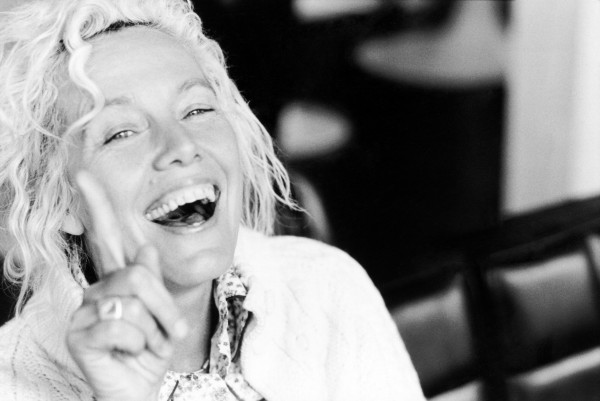Interview with Ellen von Unwerth
Interview with Ellen von Unwerth
Ellen von Unwerth
September 20, 2016
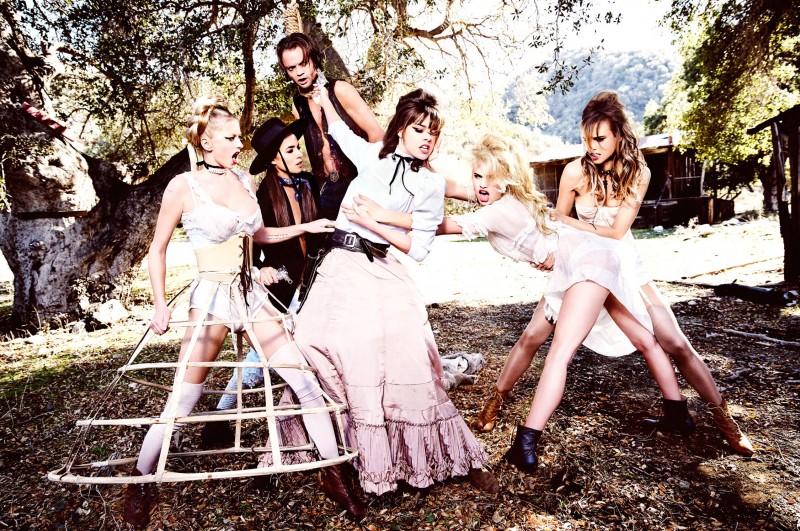
Ellen von Unwerth: It’s been a great project because you get the space you need and as much freedom as you want. This is something quite different from a magazine spread. It’s almost like a book. This is the reason why we came up with many, many ideas.
Three days before the shoot you revised the concept for this issue of S Magazine. This seems quite spontaneous!
Yes and no. In everything I do, it is important to keep my creative freedom. A concept is of course important, but I must have the possibility to react if I discover something special. In this case, we found that there were places that were suddenly available to us, like this great Western town and James Goldstein’s Lautner villa and they could give the story an entirely different perspective. We did not make the concept brand new, but instead adapted it for these locations. The same applies when you can unexpectedly work with a special person or when an unpredictable situation arises during the shoot. The concept for a shoot is important to me because it is a framework for action that leaves my options open.
How did you get the idea for this issue of S Magazine?
We realized quite quickly that we did not want to create a compilation of images from different shoots, but instead a coherent story. We wanted a narrative and then we thought we could create something even greater and almost cinematic. Therefore, we divided the story into four chapters and each of the shoots was organized as if we were making a movie.
So you became the director!
You shouldn’t take the story too seriously. I’m not a screenwriter, but it’s a nice story, a nice framework which allows you to play around a lot.
What’s the story?
The story revolves around this girl gang and that’s why I used several figures and characters – because it would be boring otherwise – who take over this Western town and try their luck at diamond mining. And indeed, the girls are lucky and find that huge diamond. Suddenly they have such an incredible amount of money that they can buy this great house – the James Goldstein villa. Then they try to host wild gambling parties with their money in order to meet people. They get to know lots of people and are introduced to a secret society. It’s at a party for this Secret Society where one of the girls is kidnapped by this truly evil villain. To raise the ransom, they have to sell everything they have. It’s the end of the dream. They are furious and lure the villain to this Western town to take him by surprise and hang him. But the victim has now fallen in love with her kidnapper and is heartbroken. At the last minute, she manages to persuade her friends to save him from the gallows. Cut! And finally there is the big happy ending and they both get married. The End.
Sounds wild. Why did you go with a Western?
Oh, for me it’s many different influences coming together. Westerns are somehow part of the zeitgeist. The Western style reflects current fashion and then I was inspired by this Tarantino movie. But my Hateful Eight are just girls.
There weren’t only models featured but also photographers, performance artists and singers – why do you like working with people from diverse disciplines?
Yes, if they inspire me, when they feel like being a part of it and are easy to work with and not bitchy. Caroline Vreeland I met with Tasya van Ree and I thought that they were a great couple together. They instantly gave me a definite yes. I find it very interesting if the subjects themselves are artists – they can easily give you something unique. Also, it’s interesting to see how they look and what charisma and energy they have. Eva Doll is rather more of an actress, but also a model… kind of both. But a few models were part of it and it’s not difficult to see that in the pictures.
If you look at the pictures, it is striking how much in character the participants all are. How did you achieve that?
Yes, it is! It always depends on how you direct them. They must already be “on it.” I tell them just what they should do – not exactly, but that’s what it is like on a film set, actually. I tell them, “You are doing this, now you do that,” but I leave them the freedom to express themselves. Therefore, you also need people who are talented actors. But your impression also comes from the choice of pictures because it’s not as if every image were perfect. You have to make multiple images in order to capture everything and feature everyone. Therefore, I always take a lot of pictures.
A former assistant once said that you are the centre of the action and that you act as a director. And, you just said it yourself.
Yes, I just like it when people move and something happens. Posed images are not really my thing. Especially for this magazine I wanted that not to be the case. However, there are also a series of portraits in which I wanted to introduce everyone who has starred in the shoot. But mostly, I wanted the image to tell a story.
Does having been in front of the camera play a role in how you work behind it now? Does this change how you work behind the scenes on the shoot?
Definitely! I was always somewhat frustrated as a model. From the beginning of my career and until the end, even though I was working with really great photographers. My problem was that I am very lively and wanted to do more in front of the camera. In the past, photographers always told me: “No, do not move! Look left! Look to the right! Do not laugh!” So, I was never really satisfied. Once I started to take photographs myself I asked my models…
…to do what you were never allowed to do!
Exactly, for example: laugh, move, and show your personality to the camera.
What is your favourite photography technique or style?
I already have the technology and the assistants, who are responsible for ensuring that it looks the way I like it. They know exactly how my light is supposed to be. They know how I will set up the camera and how I would like the background colours to look. Since I have my style, it’s true that I don’t even care about it myself, but count on my assistants to properly adjust everything. Otherwise, there is a fight. I prefer focusing on the image or scene and conducting the people so that they look good and interesting in the light.
One of your assistants films you while you are shooting. He thinks he can only shoot you with a zoom because you move so quickly that it’s not always possible to know what you’ll do next. Otherwise he wouldn’t be able to keep up with you. You are a photographer driven by the moment, right?
Yes, sure. Although I always set up the scene in advance, I love getting the special moments when something unexpected happens. I am very quick. That’s why I hate using a tripod while working. That’s a part of me. I do not like to be tied down by anything. And that’s why I prefer working with a zoom, because I can quickly capture a moment. This is very important to me.
A characteristic element of your pictures is a motion blur. We asked you to take a few sharp images because we want to produce them in large format later. What’s the blur effect in your work about?
The blur is not always wanted. It often comes from those moments when I want to react spontaneously with the camera – this sometimes creates the blur. But it is why these images often have an energy and speed and element of movement, which I often find very beautiful. I am often tempted to pick just those images. It’s not that I’m looking for this blurring. For me it is precisely these pictures which are the strongest and have an artistic ambition for me. Because there is more emotion in them or something unusual.
Once again regarding movement. The Leica S is not exactly a lightweight device. Does it impact your work in any way?
Thank you for mentioning it! (laughs). No, the camera is great. The picture quality is beautiful, but it is heavier than other cameras I work with. It is not that heavy – for a medium format camera it is not heavy at all – but already heavier than full-frame cameras. And when focusing I have to watch it because you only have this one focus point in the middle. But that is just a question of habit. On the first day it was difficult, on the second day it already started becoming a part of me. On the third day it was still better, even though everybody moved a lot and danced back and forth. But it’s good to be able to work like this with the S. Well, you have been keeping an eye on it, so I also produced sharp images. I’ve managed. But it is good that many of the blurred images have made it into the magazine (laughs again).
If you look at your pictures an erotic element plays an important role. Or is sensuality the better word?
I would say sensuality. And a love of life. And pretty women. Perhaps a little frivolity.
Very few photographers let women occupy centre stage as explicitly as you do. Helmut Newton has in-deed worked in a completely different way, but there are certain parallels. Newton women are statuesque, aloof in their own way and intimidating but your women seem to explode with sensuality while simultaneously portraying very strong personalities.
That’s exactly it. The casting plays a major role. The women who I pick must be distinguished by their sensuality and personality and they have to be alive in front of the camera. They must have fun, be very feminine and sexy. And they must be able to celebrate femininity. This is precisely what causes that unsuppressed sense of fun and puts women on a pedestal. But in a different way than Newton does, who highlights their statuesque shape and strength rather than their personality or the kind of fun I have with women.
Would you say that men can’t take pictures of women like this?
(Thinks) I would say they do it differently. I really love Newton’s photos. I think they’re great. But they are just different. Everyone does it differently. Perhaps the women I photograph have more confidence in me and therefore appear differently than they would with a man. Perhaps because they would react differently to it. But there are also many other women who photograph women, and everyone does it differently. Therefore I cannot generally confirm this.
You often highlight androgynous elements and seem to blur gender boundaries. Especially here in the party scenes it becomes clear that…
…I have always liked androgyny (laughs). I always thought that it was exciting, fascinating, beautiful and exotic. Let’s put it this way: vibrant personalities attract me.
When is a picture finished? You once said that when you started taking photographs, it was very important to develop the images, edit and retouch them yourself. What role do you play after the photograph has been taken?
This definetely plays a huge role. I was perhaps one of the last to have switched from analogue to digital. But in principle, it’s still the same. We can tweak the colours, and we can now do even more, which is great on the one hand, but difficult on the other, because there are so many possibilities. It is always difficult to find your own style. Therefore, it is very, very important that, for example, the black and white clicks, that the grain we use is not too heavy or too light, so that we get this dark, dirty vibe in a good way. The same applies also for colour – it’s fun to play around with it. I work together with my team until it works.
Do you give up control?
I have people who know exactly what I want. And we look things over repeatedly until it all fits. No, unfortunately you cannot do everything yourself. That is why it is so important to find the right people to work with.
There is a whole series of movies by you – including this story here.
Yes, but at the moment there are only these small films that I do with my director of photography (DOP). We still play around quite a bit. A real film I have not done so far. Actually, I want to do one sometime soon, but I’m always going back to photography. It is easier and you can be more spontaneous, which is very important for me. One has the photos the next day and can begin editing. In film, the process takes much longer. This has always stopped me. But as I said, I intend to make something in the immediate future.
You initially said that this S Magazine project was fairly large. What did you like about it, or do you prefer working on smaller stories?
No, I thought it was absolutely great. I was so happy to be able to do this. It was pretty exciting to do something like this at least once in your career. The project was actually like a book. And it’s fun to focus exclusively on it. I am doing a lot of fashion shoots for magazines. Then you’ll get eight or ten pages, but you can’t let your imagination run freely. But here I’m able to say “I’ll do this today and this and this and that” and then compile, and talk to people about it – and this is very exciting. And then there is the quality of the publication and the camera, which has been pretty great!
How much freedom do you usually have with contract work?
The customers who book me know what they are getting into. They book me for my style. On the other hand, I also know what you can do for which customer and how far you can go. I’ve been doing this now for quite a while and I know what the customers want – for some I have to tone down everything, for others it must not be too sexy, and for the next one it cannot be too tame. The bottom line of course is that I always try to take good pictures. As I said earlier, I know my customers and they know me. They know what I’m doing and they want to have this love of life. I love projects which offer creative leeway for individual ideas.
What you have done for this S Magazine is both nostalgic and modern all at once. Do you see the images as capturing the zeitgeist or as something more timeless?
A bit of both. It is very current because of the people who were involved. But I believe that the images, when viewed in 20 years, will still be up to date because they are not too much focused on fashion. My images age well because they are more about life, love and personalities than about style and fashion. At least that’s what I hope! It would be nice if the pictures live on and you can rediscover them and then say, “Oh, these are still great.”
This article was originally published by Leica S Magazine.
Ellen von Unwerth+-
Ellen von Unwerth, born in 1954, is a german fashion photographer, filmmaker and video director. Her work has been collected in numerous books and photo-novellas. Her photographs have been widely exhibited internationally and her work has been honoured with numerous awards. An ever-growing celebrity list includes some of the biggest names in fashion, art, music and design. More

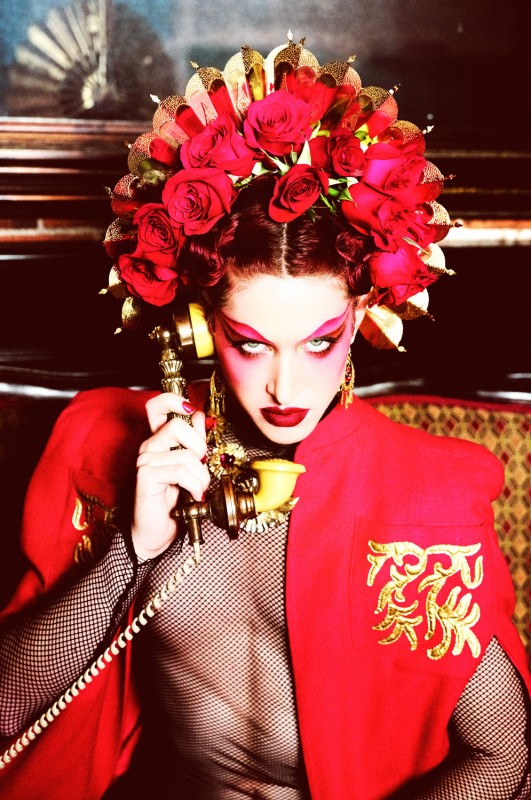
Love Bailey
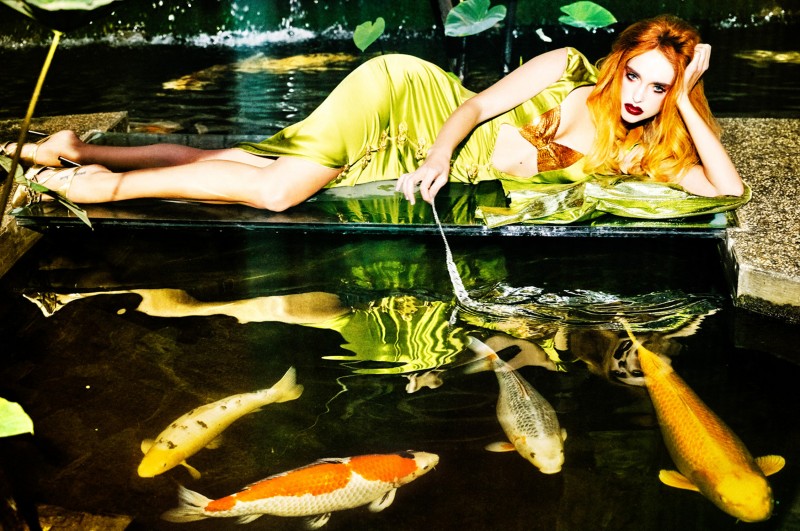
Masha Rudenko
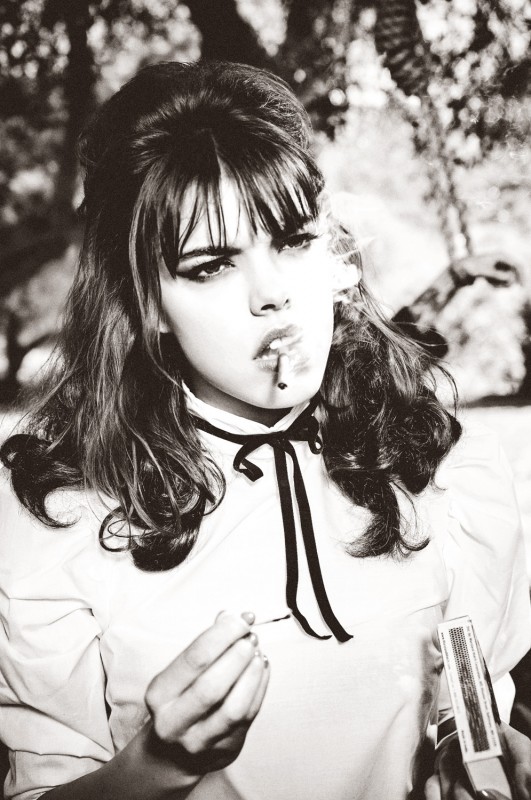
Eva Doll
